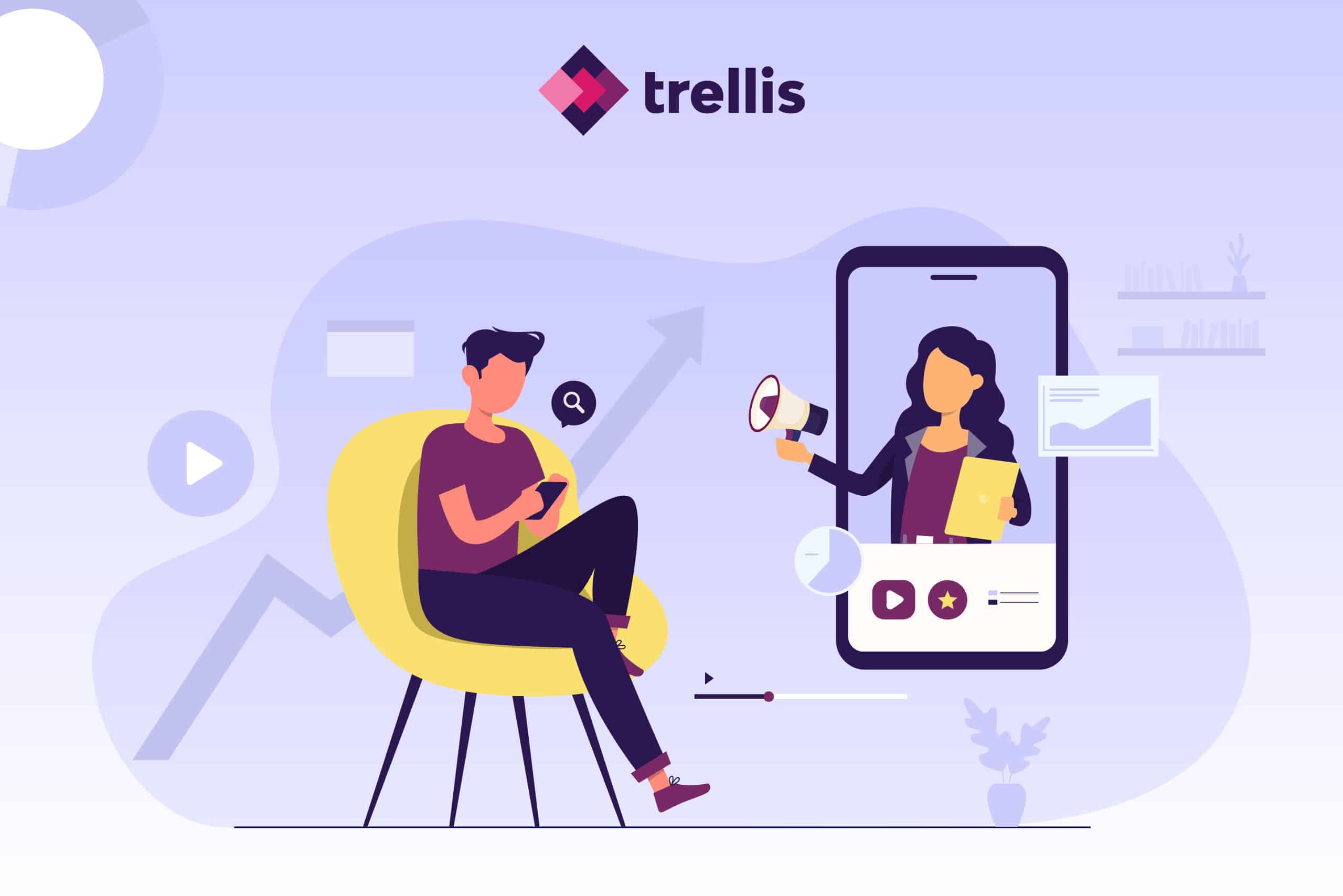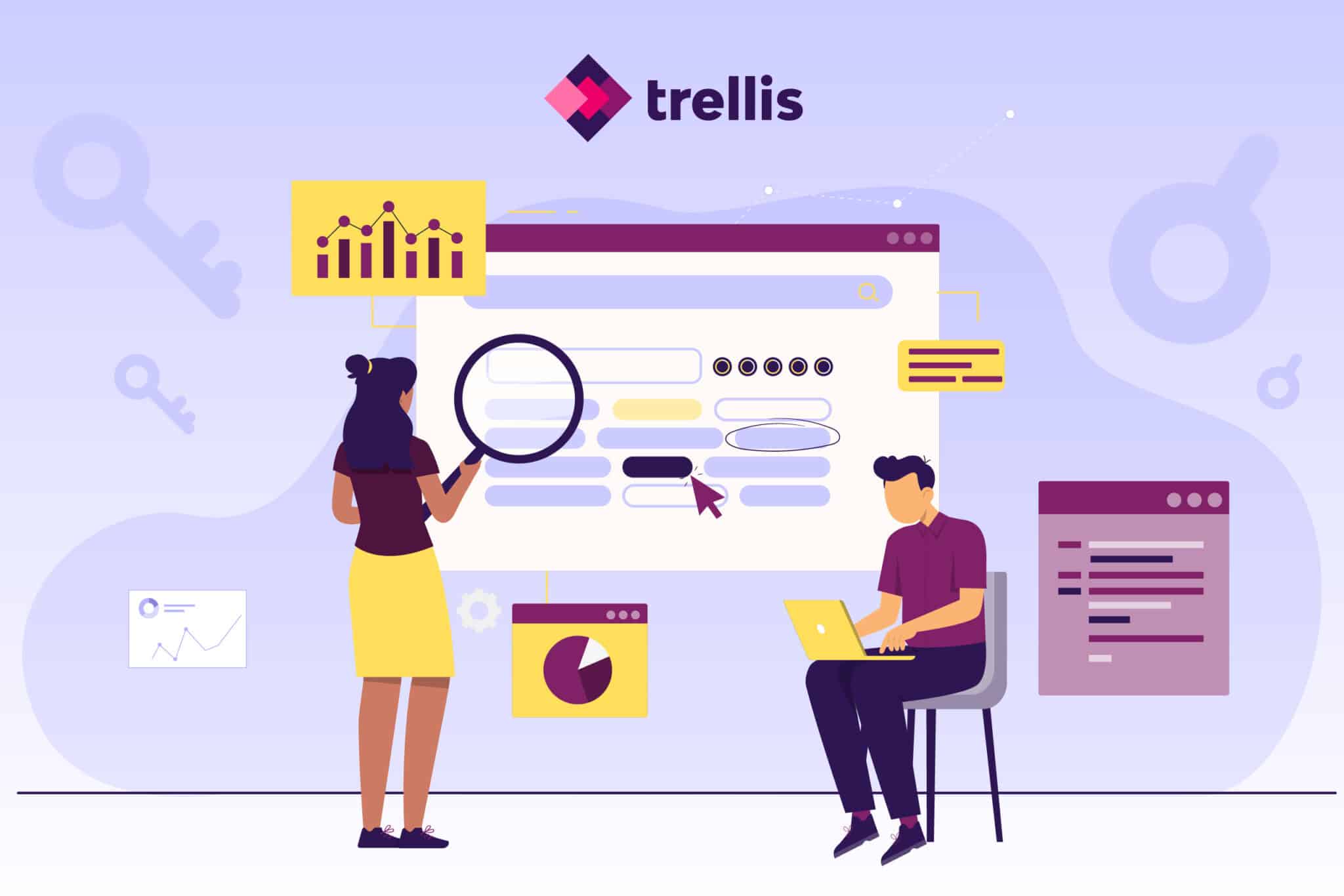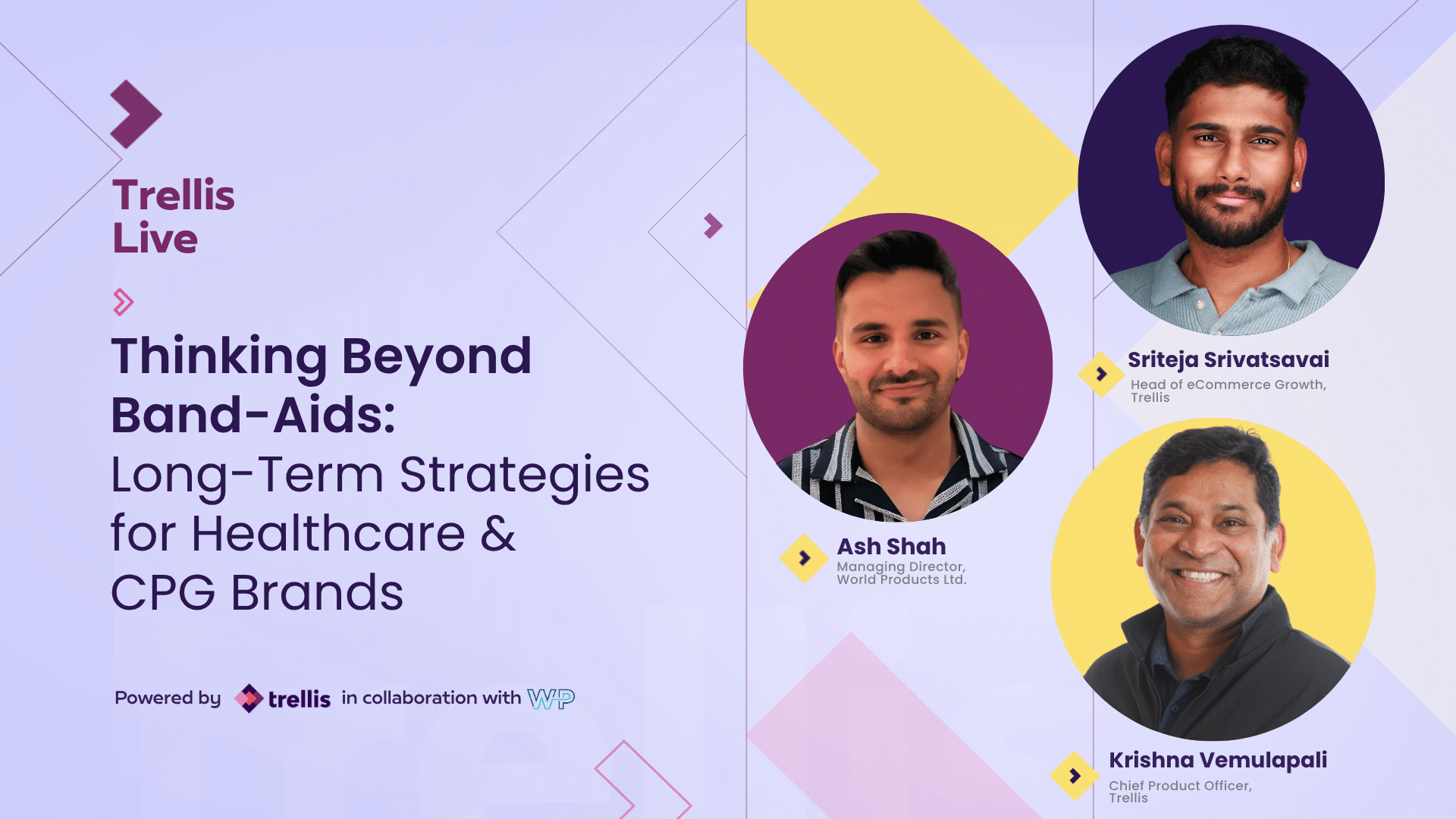In a sea of potential customers, Amazon DSP is a lighthouse for brands looking to reach new audiences, increase customer value, and position the business for long-term growth.
Fueled by extensive first-party shopper data, Amazon DSP offers both endemic and non-endemic brands huge advantages over the competition. If you’re not tapping into that data and the opportunities it has to offer, you’re falling behind.
Here’s how to use Amazon DSP to discover your most effective placements and get the best possible return on ad spend (RoAS).
Sponsored ads or DSP? Why not both? Trellis is the self-driving software solution that helps you optimize every campaign. Learn how it works with a free demo.
7 Proven Amazon DSP Strategies for Increased RoAS
Today, over 60% of Americans are Prime subscribers, which means that Amazon has more consumer data than just about any other retail platform. And in paid media, Amazon DSP continues to set the pace for innovation.
Updates unveiled at Amazon Accelerate and Amazon Unboxed have broadened the reach of video and display campaigns to include premium inventory like Fire TV, IMDb, and Twitch.
The pace of change is exciting, but it can be challenging to keep up. Here are seven tried-and-true strategies to help make sure you’re covering the basics with Amazon DSP while also taking advantage of new updates and strategies.
1. Understand Advanced Targeting
Amazon DSP offers intricate audience segmentation that, when used well, can deliver a big boost to your campaign’s efficiency and success. You can target based on parameters like:
- Demographics
- Geography
- Behaviors
- Lifestyle
- Interests
- Life events
- Product-specific interactions
You can mix and match these elements to narrowly target audiences who are likely to buy your products.
For example, you could target people who have viewed, searched for, or purchased a specific ASIN in the past 30 days. Then, you could layer on an income range to make sure you’re reaching users with the means to convert.
Precise targeting and segmentation are critical to RoAS, especially as competition matures and margins thin on table-stakes Amazon ad strategies like paid search placements.
“The next opportunity,” says Denis Leclair, Trellis VP of Data Science, “that brands need to go after to differentiate is on those higher-level upper funnel tactics that can get very expensive unless you’re smart about how you’re targeting.”
Pro Tips:
- Combine demographics with first-party data to target your customers on non-Amazon sites.
- Group products by popularity in specific regions and promote them with geographic targeting.
- Remarket to older audiences to build loyalty and customer lifetime value (LTV).
- Use exclusions to prevent cannibalization of organic traffic.
2. Use Strategic Retargeting Techniques
Who’s easier to convert: Someone who’s never even heard of you, or someone who’s already viewed one of your products? Retargeting keeps your brand in front of people who have already engaged with you in some way, whether it’s visiting your website or buying a product.
You’ve already done the work to earn this traffic. Don’t lose out on the return on that investment.
Cart abandonment costs eCommerce brands $18 billion in sales revenue every year. Amazon retargeting helps you capture some of that revenue and increase your existing customers’ LTV.
In this case study from award-winning agency Dept, the client used retargeting tactics including product view retargeting, competitor conquesting, and in-market segmentation to boost sales, resulting in ROaS ranging from 3.8 to 5.9 in respective markets.
Pro Tips:
- Use retargeting to nurture customer lists to build loyalty and grow LTV.
- Try using AI to generate personalized images for retargeting campaigns.
- Explore dynamic retargeting ads that automatically showcase the most relevant products based on user behavior.
3. Develop Custom Audiences
Once you have fundamental segmentation and retargeting down, you can start to get creative with custom audiences. This is where deep understanding of your customer personas and buyer’s journey starts to pay off.
Amazon DSP’s custom audiences tool lets you create detailed segments for precise targeting by integrating your own first-party data with Amazon’s shopper data.
In practice, this can mean:
- Segmenting your owned audiences based on user purchase and engagement behavior
- Targeting new audiences that mimic the characteristics of your best customers
- Adding geographic layers onto other targeting parameters
- Targeting your customers when they experience a significant life event
These are just a few examples of how powerful custom audiences can be. If your target market is starting to feel too narrow with search-based targeting and you have specific goals to acquire new customers or increase AOV, it’s time to explore custom audiences.
Trellis Chief Evangelist Ali Babul explains: “The way that you’re able to create a playbook on your own shopper data—on the way that customers purchase your products and the behaviors they exhibit along the way—is super valuable.”
Pro Tips:
- Build lookalike audiences based on your customer lists and audiences from other marketplaces like Shopify.
- Target users looking at similar or complementary products, e.g. If you sell fishing rods, target users who’ve recently viewed camping or outdoor gear.
- Target users who read reviews of products like yours, even if yours isn’t mentioned.
- Target shoppers consuming related content.
4. Drive Conversions with External Traffic
Tactics that drive traffic from external sites can boost your Amazon listings’ visibility and sales.
Recent data suggests that around 50% of shoppers in the US don’t use Amazon as the starting point of their online shopping journey—many start on Google, retail/brand sites, or social media. That’s why it’s so essential to intentionally bring in external traffic.
Of course, any time you’re sourcing traffic externally, understanding attribution is the key to success. Amazon’s attribution features help you pinpoint which ad channels or social media platforms are driving the most traffic and conversions.
Pro Tips:
- Use attribution tags to understand how your social campaigns are impacting your sales funnel.
- Make sure ad and social creative align with your Amazon product pages for a cohesive shopper experience.
- Experiment with influencer partnerships to tap into new audiences.
Additionally, if you’re utilizing non-Amazon advertising methods to drive traffic back to the marketplace, you can earn a Brand Referral Bonus from Amazon.
Fine-tuning your attribution model gives you the power to optimize your media strategy. Learn how with our top Amazon DSP attribution tips.
5. Test and Optimize Your Creative
Advertising is often considered a numbers game, but creative can have a huge impact on a campaign’s results. Amazon’s new AI-powered creative tools give sellers an innovative way to create and refine their messages and imagery:
- Responsive eCommerce creative: Automatically generate dynamic ads with up to 20 associated ASINs.
- Audio generator: Create an interactive audio ad with voiceover and music in minutes.
- Image generator: Create eye-catching visuals based on text description or other inputs you provide. (Available within Trellis’ platform!)
- Video builder: Create on-brand, ready-to-use videos.
Sellers using Amazon’s generative AI tools have launched 20% more campaigns and seen a 4% increase in sales.
“Traditionally, investing in multiple ad formats and placements demands significant time, budget, and expertise,” says Jay Richman, VP of Creative Experiences for Amazon Ads. “Now, with AI creative studio, advertisers can easily draw inspiration from custom concepts, select one, and seamlessly create display, video, and eventually audio ads—all within a single workflow.”
Pro Tips:
- Continuously test creative variations to identify which drive the best RoAS.
- Look for opportunities to use interactive elements in ad creative, like shoppable images or videos.
6. Conduct A/B Testing
A/B testing is vital to refine your campaigns and make decisions based on real-world data. Amazon DSP offers native creative testing features to help you systematically compare ad variations and identify the most effective elements.
With these features, you can run typical campaign-based A/B tests as well as surveys to identify the most appealing creative elements for your audience.
Pro tips:
- When A/B testing, start by evaluating CTAs to make sure you’re using the most compelling prompts.
- Update tested creative to reflect seasonal trends or major events.
- Use learnings from A/B testing to tailor future campaigns to each audience.
7. Monitor and Analyze Campaign Performance
Along with A/B testing, you also need an overarching plan to track and analyze your Amazon DSP campaigns’ performance. This will help ensure you’re continuously improving your media strategy in terms of budget allocation, campaign structure, bidding strategies, and creative strategy.
Amazon DSP offers many different reports that provide campaign insights, including:
- Where customers are geographically when they see your ads
- Which devices and platforms they’re using
- Which sources contribute to successful conversions
If regularly reviewing nine reports sounds like a hassle, consider setting up a centralized Amazon ads dashboard that aggregates your most important data.
Pro tips:
- Review geography reports to identify high-performing regions and reallocate budgets in areas with high conversion rates.
- Analyze conversion path reporting to identify important touchpoints throughout your customer journey.
- Check out Amazon Ads Academy’s course on analyzing DSP campaign performance.
Master Amazon DSP and Leave Plenty Room for Growth
These strategies can help you use Amazon DSP to its full potential and maximize your RoAS. But in eCommerce, there’s no one-size-fits-all paid media strategy. The most successful approaches involve staying informed, adapting, and refining to learn what works best for your brand.
To keep up with the latest trends in Amazon advertising, subscribe to The Climb. To utilize Trellis to make the most of your DSP campaigns, book a demo with our team.






